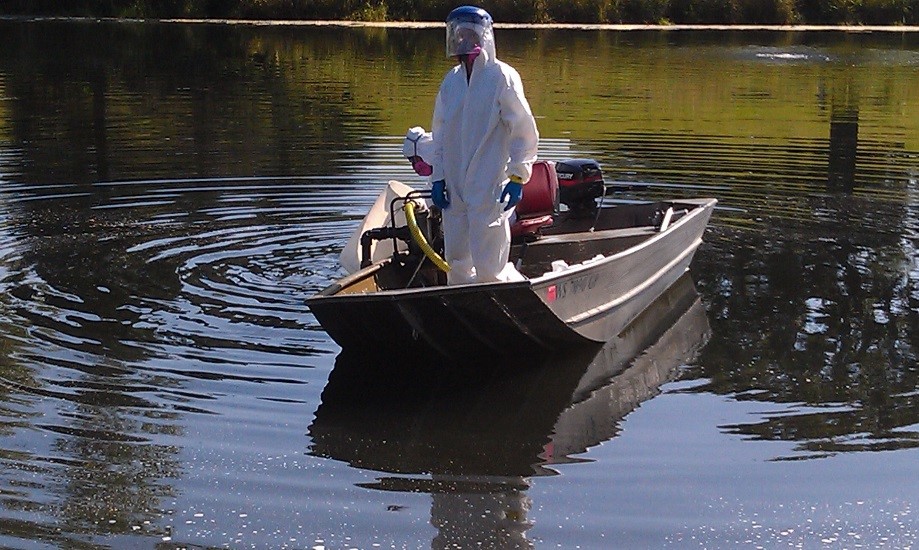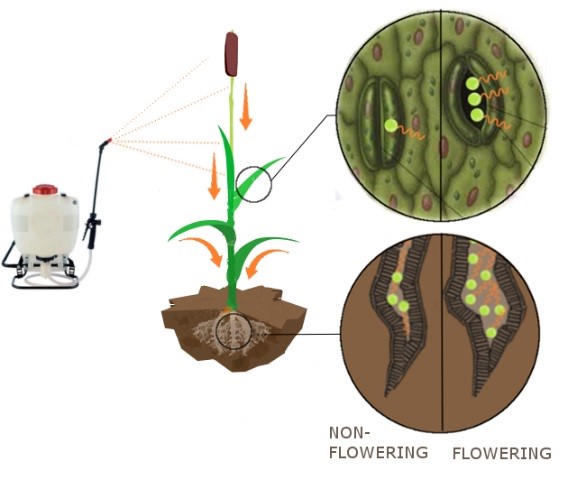Glyphosate is commonly used to treat many aquatic plants in lakes and ponds or other waterways. Some of the most commonly treated plants include cattails, water hyacinth, purple loosestrife, water lilies, phragmites, and water lettuce. Being a systemic herbicide, the glyphosate is absorbed by the plant and moves throughout the plant tissue. The glyphosate inhibits an enzyme needed for growth and other processes. When the aquatic plant dies, it often sinks to the bottom of the water and contributes to both the organic matter buildup and internal nutrient reservoir.

Alternatives if glyphosate is banned or restricted in your area:
Chemicals –

Mechanical –
Mechanical methods can be another option for reducing glyphosate use. Harvesting, hand pulling, or ranking are a few examples of mechanical methods. When used appropriately, mechanical methods can be a very sustainable approach. Glyphosate is rated as “good” for controlling water lettuce. However, it can also be controlled by raking or skimming it off the surface.
Cultural–
Perhaps the most sustainable treatment method is also the most difficult to deploy. Prevention, monitoring, and education are all different types of cultural treatment methods. Preventing boats that have invasive aquatic plants on their trailer from entering a water body is one example. Another example is implementing a monitoring program to identify invasive aquatic plants before they become too much of a nuisance. Companies like Natural Lake Biosciences are avid partners in making cultural methods easier for applicators, through both education and laboratory services.For videos on lake treatment education and sustainable practices:
Natural Lake Biosciences on YouTube
Biological –
Biological methods such as biocatalysts and probiotics are often used as part of an integrated management program to improve the sustainability of aquatic plant treatments. As mentioned earlier, biocatalysts can reduce the overall use of herbicides such as glyphosate by improving their ability to be absorbed into the target plant. In addition, they aid in the breakdown of the dead vegetation which reduces their contribution to the organic muck layer. Probiotics such as MD Pellets, Water Column Clarifier, or Temperature Driven Solutions are often used alone as a long-term treatment program to reduce internal and external nutrient loading. They also reduce rapid sedimentation caused by buildup of organic matter. In addition, they are also often applied after herbicide treatments to rebuild the microbial community in the aquatic ecosystem and reduce soluble nutrients that have been released.
Whether you currently use glyphosate a little or a lot, the conflicting information on a quick google search can leave you unsure of what to do next. But Natural Lake Biosciences is here to help and wants you to feel confident that your treatments will be safe, effective, and sustainable.
More educational resources at: https://naturallake.com/technical-updates/



